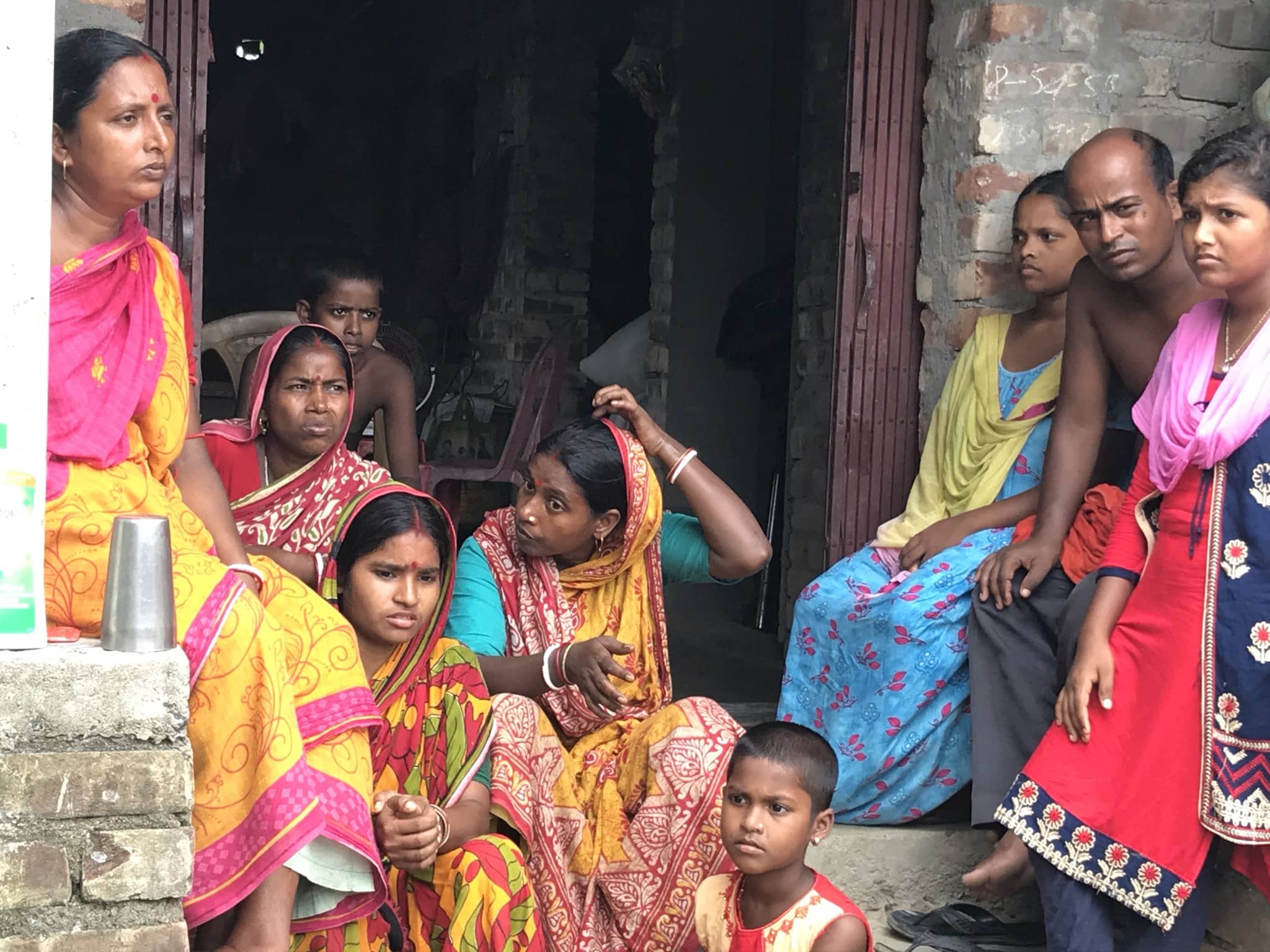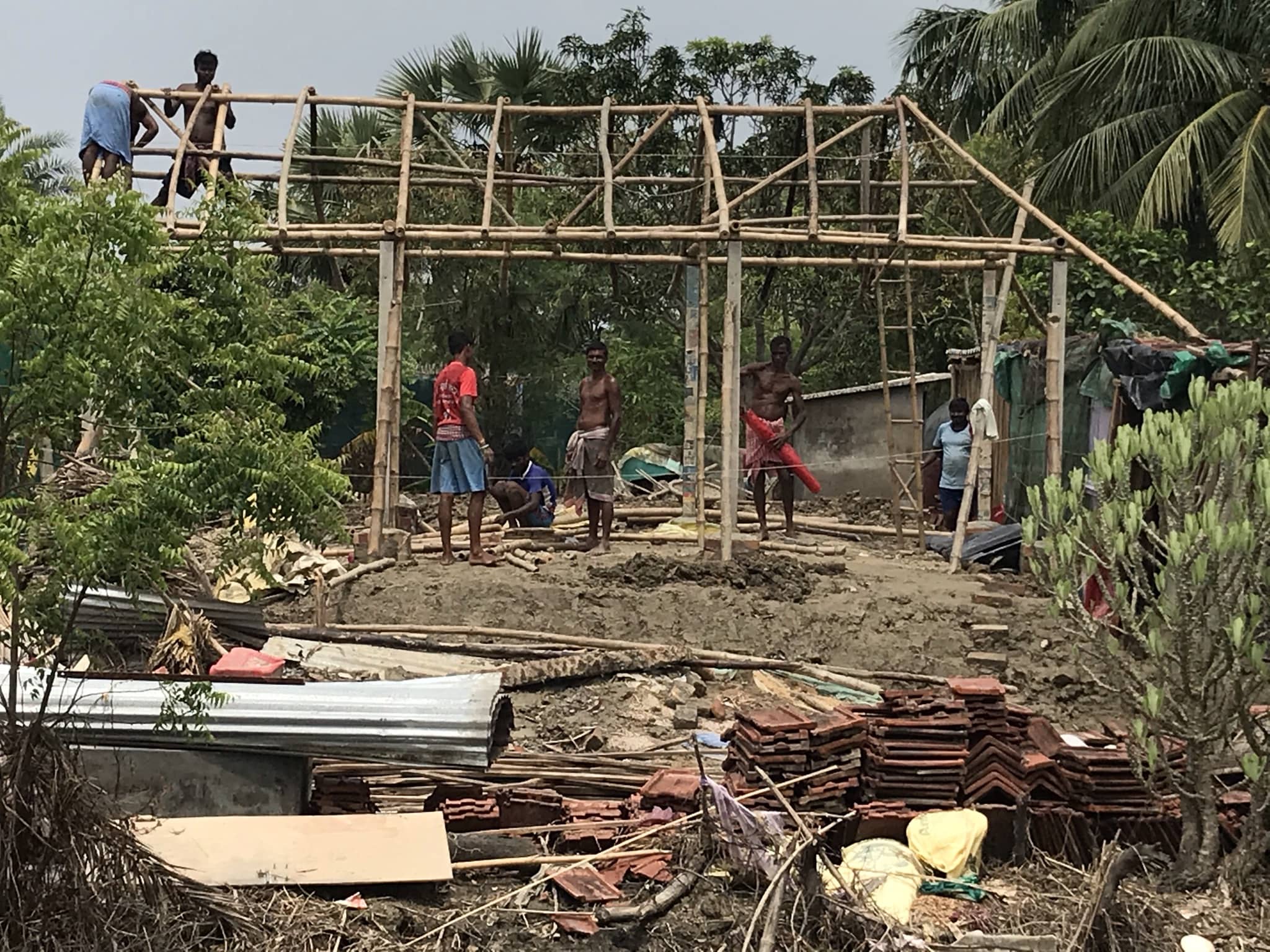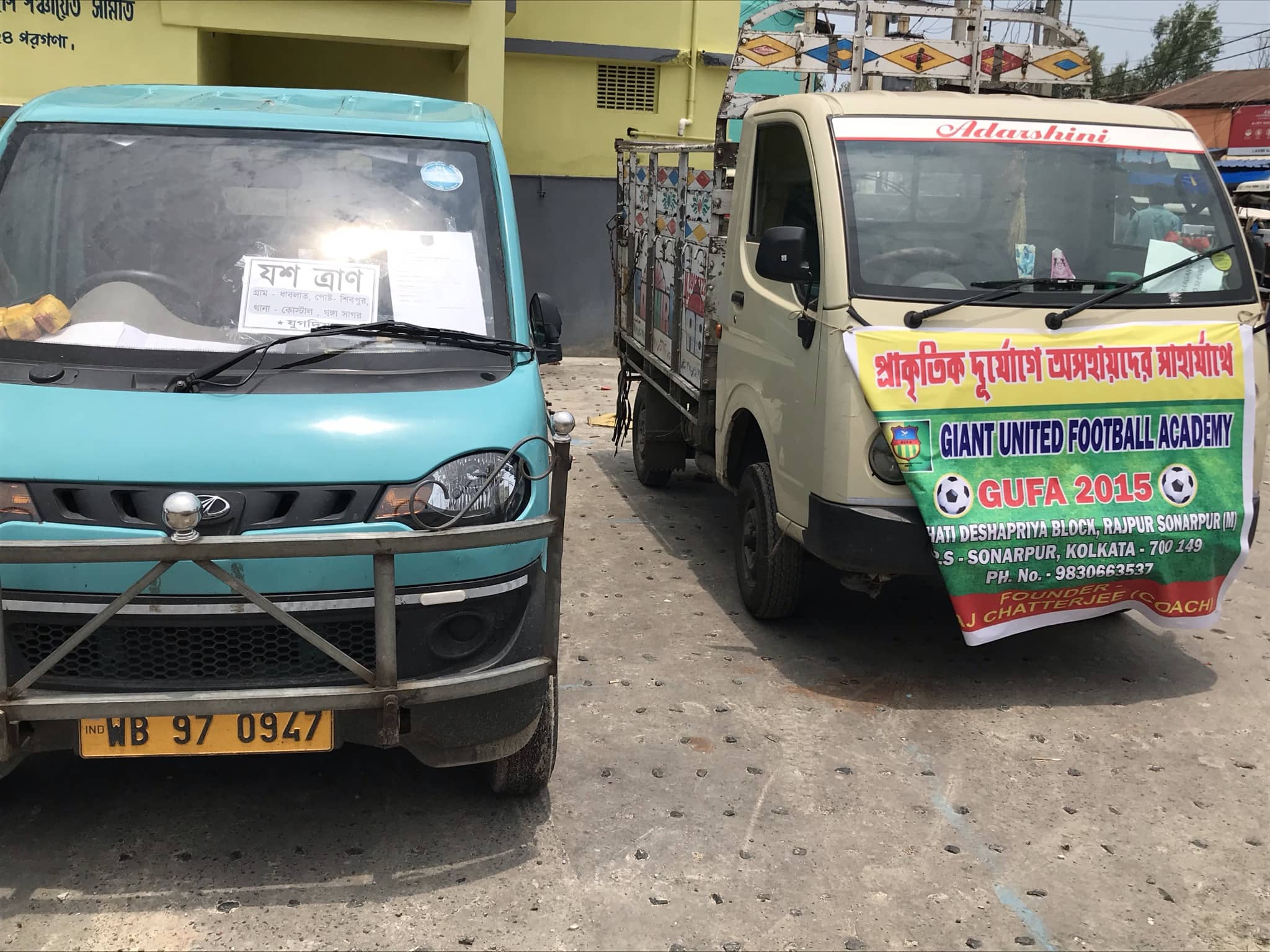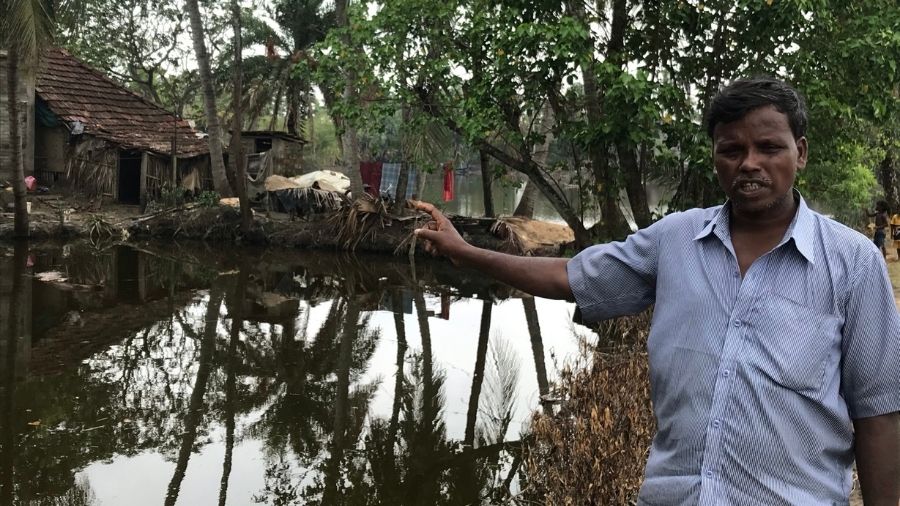Even the gods aren’t safe on Sagar, the largest of the Sundarbans islands. The Kapil Muni temple on the south side of Sagar attracts millions of Hindu pilgrims every January but their combined prayers can’t keep the seawater away.
Says priest Durgapada Pahari: “The temple has been pushed in by at least 7km. It has been rebuilt at least four times, each time further from where it stood earlier.” Another move may not be long coming.
“This time during Cyclone Yaas, the seawater had reached the temple,” adds Pahari.
The temple priests and the island’s people are bracing for another rough weekend of heavy rain and storm. Embankments will be breached again, homes will get flooded, crops will be damaged and the fish in the pond will die.
Thursday's new moon will mean high tides and more devastation. For the 4,000-odd residents of Sumatinagar and Kachuberia on the north side of Sagar Island, this is their life.
Islands like Lohachhara, Suparibhanga and Bedford have long vanished and are preserved only as memories by a few community elders. Younger people say these are mere names to them. “I don’t know these names. Maybe the elders will know,” admits Shubhankar Mandal, a post-graduate in history who still lives on the island. Sagar, spread over 280sq km, has lost about 51.8sqkm since the middle of the last century but the island’s residents hang on even though they’ve become resigned to a dismal future.

At Maitymore in Kachuberia, the Mandals, including their relatives and near relatives are huddled in their half-built house. Their documents, cattle were scattered as the water level rose on the day of cyclone Yaas. The family is waiting to hear from the panchayat and government officials for the compensation, after having filled up the form for Relief-at-your-doorstep (Duaare Tran). Picture by Arnab Ganguly
“We lose our fields, our homes, we go elsewhere to survive the current threat. I don’t know how long we can manage like this,” says Sheikh Farooque, who taught at a private school at Subhasgram near Sonarpur near Calcutta before the lockdown. He now survives by giving tuitions to students, though most of them can’t pay.
Farooque has gone through this routine countless times. He’s from Ghoramara island north-west of Sagar and was at a storm shelter here before Cyclone Yaas hit on May 23.
Says Farooque: “Our house is completely destroyed. We are staying in a tent. The pond feels like acid. Even now there is water till the knee. After tomorrow the situation is going to get worse. Some people have left in a vessel which came in the evening, some have decided to stay in the cyclone shelter.”
There have been countless plans to prevent damage to these islands. But the fact is that even the most basic measures haven’t been completed. Yaas hit on May 23 and since then, only half of the 317 embankment breaches have been repaired. It will take a month for the remaining to be fixed. This means that local residents are exposed to another round of inundation and destruction. This time under the invisible gaze of a new moon, which causes higher tides, on Friday, June 11.

At Maitymore in Kachuberia, Sagar islands, the residents are busy rebuilding their homes till the next cyclone breaches the island. Picture by Arnab Ganguly
The agents of destruction have come particularly swiftly in the last two years. Before Yaas, three other cyclones, Fani (May 2019), Bulbul (November 2019) and Amphan (May 2020), struck with devastating force. They’ve made life even worse than it usually is for the people of Sagar and the islands around it at the confluence of the Bay of Bengal and the Channel Creek locally christened Muri Ganga River.
Located around 130km from Calcutta at the southern-most tip of West Bengal, Sagar Island is one of the 102 islands on the Indian side of the Sundarbans, one of the world’s largest mangrove forests, shared between India and Bangladesh, with over 200,000 residents.
Kachuberia in the northern tip of the island is connected to the Kapil Muni temple at the southern extreme by a 30-km metalled road, which fortunately survived the last cyclone. Nevertheless, localities on both sides of the road were hit badly by it.
Around 54 islands on the Indian side are inhabited and home to approximately 5 million people, many of whom have learnt to live with the constant threats to their homes, livelihood and lives as natural disasters of increasing ferocity keep pounding the area.
Kept alive by mythology, the vagaries of nature, coupled with human greed, have brought the islands to the brink of disappearance. The gradual destruction of Sundari forests, that lends its name as well as protection to the area, has left Sagar’s residents vulnerable.

Boats, medium and small sized, are the only means of transport along the Muriganga river till Sagar Islands, some 135 kms from Calcutta, as the government-run ferry service has been stopped in the wake of the Covid pandemic. Water, biscuits, puffed rice are the most commonly delivered relief materials. In some places sanitary napkins and soaps have also been delivered. Picture by Arnab Ganguly
Over the past several decades Sagar has turned home for many of those who were displaced from neighbouring islands, primarily Ghoramara. Today, its very existence is under threat. Almost 12 per cent of the shoreline has been lost to the advancing sea. NASA satellite images reveal the rise of the sea level by an average of 3cm in the past two decades.
The ravages of nature are particularly harsh on livelihoods. Before the sea devours land, it makes it unfit for life and farming. Ponds get inundated with salt water. Fish die. Construction of dams on rivers has reduced the flow of freshwater to the delta, while the sea pushes inwards and increases the saline quotient.
“Ponds need to be dry fast for freshwater to fill it up again. But where is the respite from this never-ending series of natural calamities that has left us on the brink of ruin?” said Gouranga Jana, a resident of Sumatinagar.
With saline water deposition leaving the fields unfit for cultivation, an increasing number of residents are venturing out into the sea for fishing, an unsustainable livelihood measure for most as the catch is fast dwindling.
Pratikar Rahman, state SFI president who has been travelling around Yaas-affected areas of South 24-Parganas, including the Sunderbans, has a lot to say about the hopeless situation.
“The only way to protect Sagar and Sundarbans is planting mangroves and building concrete embankments. Everything else is a temporary measure that will be washed away in the next floods,” says Rahman who contested unsuccessfully from the neighbouring Diamond Harbour constituency in the just-concluded assembly elections.
Chief minister Mamata Banerjee also stresses that mangroves must be grown to protect the islands, but officials looking after the development of Sundarbans agree it will take time.
“It will take time for the mangroves to grow. Every monsoon, every cyclone our priority is to save lives from the imminent threat. Long-term measures take a backseat as immediate relief takes over,” said a senior government official.
Sources in the state administrative headquarters said Mamata has instructed the South 24-Pargana district administration to shift 20,000 people from Sagar and Mousuni islands to safe zones and cyclone shelters ahead of Wednesday’s rainfall and high tide.

Mini trucks parked at lot number eight near Harwood Point. In the aftermath of the cyclone Yaas, these minitrucks traveling along the Diamond Harbour Road up to Namkhana and other parts of the cyclone affected areas have become a familiar sight. Picture by Arnab Ganguly











